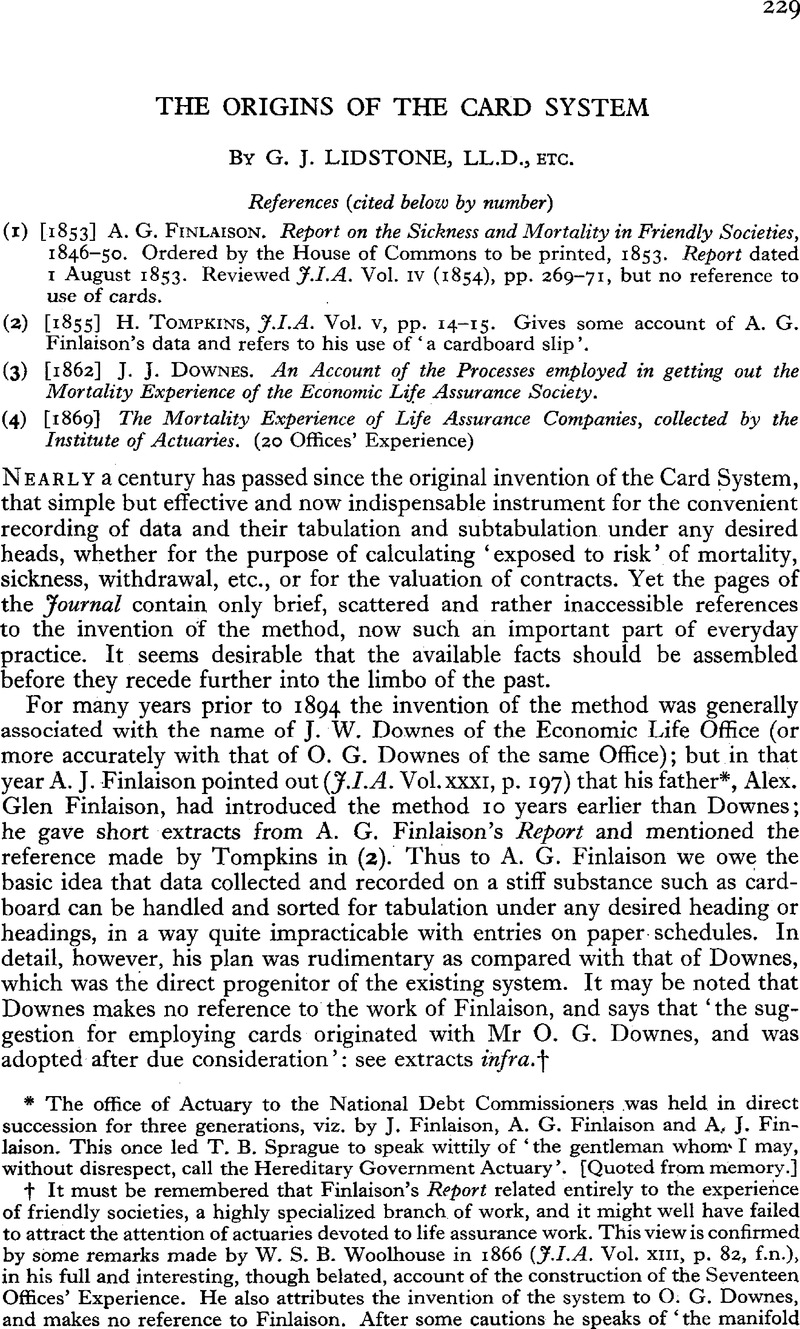No CrossRef data available.
Article contents
The origins of the card system
Published online by Cambridge University Press: 18 August 2016
Abstract

- Type
- Other
- Information
- Copyright
- Copyright © Institute and Faculty of Actuaries 1946
References
page 229 note * The office of Actuary to the National Debt Commissioners was held in direct succession for three generations, viz. by J. Finlaison, A. G. Finlaison and A, J. Finlaison. This once led T. B. Sprague to speak wittily of ‘the gentleman whom I may, without disrespect, call the Hereditary Government Actuary’. [Quoted from memory.]
page 229 note † It must be remembered that Finlaison's Report related entirely to the experience of friendly societies, a highly specialized branch of work, and it might well have failed to attract the attention of actuaries devoted to life assurance work. This view is confirmed by some remarks made by W. S. B. Woolhouse in 1866 (J.I.A. Vol. XIII, p. 82, f.n.), in his full and interesting, though belated, account of the construction of the Seventeen Offices' Experience. He also attributes the invention of the system to O. G. Downes, and makes no reference to Finlaison. After some cautions he speaks of ‘the manifold advantages of the system’. These advantages will be better appreciated by modern actuaries who have been brought up on the Card System if they will turn to and consider Woolhouse's examples of the schedules which were used under the old system (loc. cit. pp. 78–80).


